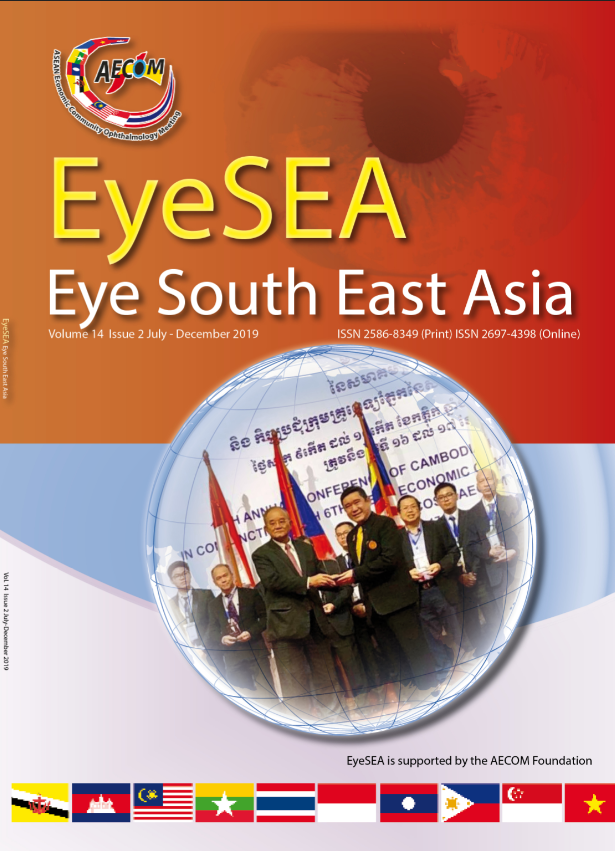Title: Case series: The rise of fungal endophthalmitis from suspected environmental contamination.
Main Article Content
Abstract
Title:
Case series: The rise of fungal endophthalmitis from suspected environmental contamination.
Background:
A spike of 5 cases of positive culture fungal endophthalmitis occurred within a period of 30 days in patients with different working diagnosis. Investigations were initiated to look for possible causes/explanation.
Results:
Five cases with different working diagnosis had positive fungal culture within a period of thirty days. Investigations showed that four out of five sampling were done in the same procedure room, and that all culture plates used were from the same refrigerator in the same procedure room. The procedure room environment was sub-optimal for procedures. A non-functioning air-conditioner created a hot and humid environment. A blowing stand-fan was used to provide air circulation during procedures. Multiple green-black-brownish spots of fungi growth were noticed on the cellulose ceiling board. The infection control team were informed and involved in investigation and rectification process, which include but not restricted to thorough disinfection procedures and air-conditioner repair. There were no longer any clinically inappropriate positive cultures reported following rectification. As patients responded well without/before starting anti-fungal therapy, we strongly believe that the clinically inappropriate positive cultures were due to environmental contamination.
Conclusion:
Contamination/infection can occur via airborne pathogen transmission especially fungi, thus WHO recommended a level of <50 CFU/m3 of air in hospital settings. A high level of suspicion should be maintained. Lab results are not absolute and clinical co-relation is of utmost importance in patient’s management.
Article Details
References
2. Li C-S, Hou P-A. Bioaerosol characteristics in hospital clean rooms. Science of The Total Environment. 2003;305(1-3):169-76.
3. Ross C, Menezes JRd, Svidzinski TIE, Albino U, Andrade G. Studies on fungal and bacterial population of air-conditioned environments %J Brazilian Archives of Biology and Technology. 2004;47:827-35.
4. Perdelli F, Cristina ML, Sartini M, Spagnolo AM, Dallera M, Ottria G, et al. Fungal contamination in hospital environments. Infect Control Hosp Epidemiol. 2006;27(1):44-7.
5. Azimi F, Naddafi K, Nabizadeh R, Hassanvand MS, Alimohammadi M, Afhami S, et al. Fungal air quality in hospital rooms: a case study in Tehran, Iran. J Environ Health Sci Eng. 2013;11(1):30.
6. Panagopoulou P, Filioti J, Petrikkos G, Giakouppi P, Anatoliotaki M, Farmaki E, et al. Environmental surveillance of filamentous fungi in three tertiary care hospitals in Greece. Journal of Hospital Infection. 2002;52(3):185-91.
7. Malloch DD. Moulds. Their isolation, cultivation and identification [Available from: https://website.nbm-mnb.ca/mycologywebpages/Moulds/Contamination.html


